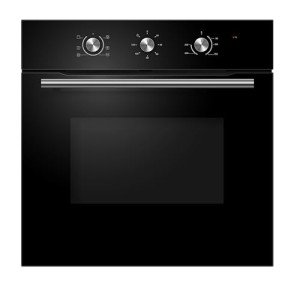The Integrated Oven: A Comprehensive Guide
In modern-day cooking areas, the pattern towards integrating appliances with cabinets to develop a smooth look has gained substantial traction. Among these essential kitchen tools, the integrated oven stands apart as a preferred choice for numerous property owners and cooking enthusiasts. This short article explores the benefits, features, and considerations associated with integrated ovens, as well as answering typically asked questions.
What is an Integrated Oven?
An integrated oven is a kind of built-in oven that is designed to be flush with kitchen cabinetry. Unlike freestanding models, which typically stand out by themselves, integrated ovens are hidden or partly hid, offering a streamlined and cohesive visual to the kitchen area. These ovens come in numerous designs, consisting of single, double, and steam ovens, and can be integrated with shelves and cabinets for enhanced storage.
Advantages of Integrated Ovens
Integrating an oven into your kitchen design can provide numerous benefits. Here are some benefits of selecting an integrated oven:
Space-saving Design:
- Perfect for smaller sized cooking areas, integrated ovens take full advantage of space usage, leaving more space for other appliances or storage.
Aesthetic Appeal:
- The flush installation produces a streamlined, modern look that can elevate the general atmosphere of a kitchen.
Customizability:
- Integrated ovens can often be tailored to match cabinets or to consist of unique features such as pull-out racks.
Improved Functionality:
- Many integrated ovens come geared up with sophisticated cooking technology, such as clever programs and convection heating, enhancing cooking results.
Increased Property Value:
- An integrated oven can improve the value of a home, attracting possible purchasers who have an interest in modern-day, well-appointed kitchens.
Picking the Right Integrated Oven
When choosing an integrated oven, various factors ought to be considered to guarantee that the model fits your cooking requirements and kitchen layout. Below are some crucial considerations:
Size and Capacity:
- Check the dimensions of your kitchen space. Requirement sizes normally range from 60cm to 90cm in width, with capabilities differing based on the number of dishes you typically prepare.
Type of Oven:
- Decide in between traditional, convection, and steam ovens. Stove are popular for their even heat distribution, while steam ovens maintain moisture for better-flavored meals.
Features:
- Look for functions that match your cooking style. Some performances to consider include:
- Self-cleaning options
- Smart innovation combination
- Multiple cooking modes
- Safety features
Energy Efficiency:
- Opt for energy-efficient designs that take in less electricity while using high efficiency.
Budget plan:
- Integrated ovens are available in numerous rate varieties. Determine your budget plan while considering the longevity and durability of the device.
| Feature | Recommended Model | Description |
|---|---|---|
| Self-Cleaning Function | Yes | Conserves time and effort keeping cleanliness |
| Convection Cooking | Yes | Improves heat distribution for even cooking |
| Smart Technology | Optional | Enables control from mobile phones or voice assistant |
| Several Cooking Modes | Yes | Flexibility in cooking different dishes |
| Energy Rating | A/A+ | Ensures lower energy intake |
Setup and Maintenance of Integrated Ovens
Proper installation and upkeep are vital for optimum oven performance. Here are some actions to think about:
Installation Steps
- Preparation: Ensure you have all the necessary tools and products before starting the installation.
- Measure the Custom Space: Confirm the fit of the oven against the cabinets.
- Connect to Power Supply: Consult an electrician for safe electrical connections.
- Leveling: Ensure the oven is level to avoid cooking disparities.
- Connect Cabinet Panels: If needed, connect ornamental panels for a personalized appearance.
Upkeep Tips
- Regular Cleaning: Frequent cleaning prevents food accumulation and guarantees the oven runs effectively.
- Look for Damage: Inspect the door seals and interior for indications of damage regularly.
- Service Regularly: Schedule expert servicing to keep efficiency and performance levels.
- Follow Operating Instructions: Always follow manufacturer guidelines for operation and upkeep.
Regularly Asked Questions (FAQs)
What is the difference in between a built-in oven and an integrated oven?
While both types are designed to fit into cabinets, built-in ovens can stand out slightly, while integrated ovens sit flush with surrounding cabinetry.
Are integrated ovens more pricey than conventional ovens?
Generally, integrated ovens can be more pricey due to the style and functions that accommodate a smooth build into the kitchen.
Can I replace my existing oven with an integrated oven?
Yes, but ensure to consider the size and any modifications needed for your cabinetry and kitchen layout.
How long do integrated ovens normally last?
With proper upkeep, integrated ovens can last anywhere from 10 to 15 years or longer.
Do integrated ovens need unique installation?
Integrated ovens typically require expert setup to guarantee they are fitted properly with appropriate connections and precaution.
Integrated ovens use a sophisticated and efficient solution for contemporary kitchens, improving aesthetic appeal while offering sophisticated cooking abilities. By thoroughly evaluating features, setup, and maintenance, property owners can pick an integrated oven that best matches their culinary needs and style choices. With best integrated oven and hob and types readily available, anybody can accomplish a practical area that complements their cooking lifestyle, making the integrated oven an excellent financial investment for any home.

